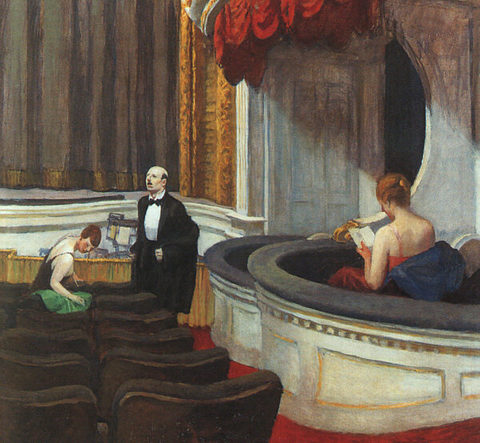I had the pleasure of viewing the Edward Hopper exhibit at the National Gallery of Art in Washington, DC this past weekend. Hopper is best known for "Nighthawks," posters of which were apparently almost ubiquitous in college dorms at one point.
Edward Hopper, Nighthawks, 1942. Photography © The Art Institute of Chicago.
What struck me is Hopper’s use of both Drama and (Relevant) Detail. Look at almost any picture and it makes you want to ask "what is going on there?" The drama – the story – is a big part of the appeal of his paintings.
Edward Hopper, Two on the Aisle, 1927.
My four year old son–who is more at home climbing trees than visiting art galleries–pointed to Two on the Aisle and asked "Dad, what do you think is going to come on when the curtain opens?" Even a child is drawn in by the drama.
The other lesson from Hopper is his use of relevant detail. His paintings contain all the detail they need to draw us into the story–and no more. He is not afraid of detail, of making his paintings seem "too busy." But neither does he paint in any irrelevant detail. My brother, who was also with us and is himself an artist, tells me that this is because Hopper drew sketches on site and painted in his studio, so in his studio he could only paint the detail that he captured in his sketches, and nothing more. No matter the reason, the lesson is a good one for presentation slides–enough detail to draw in your audience and tell the story, and no more.

